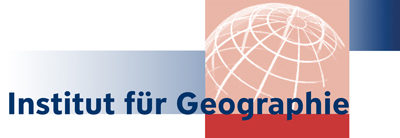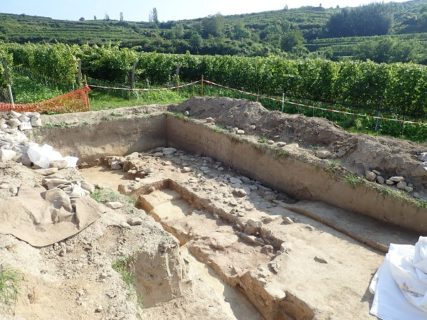Institutskolloquium physische Geographie – 02.02.2022
Palaeoenvironmental conditions and their impact on human subsistence during the last glacial in Central Europe
Lilian Reiss (FAU, AG C. Mayr)
The early Gravettian is an archaeological unit 33,000-29,000 years before present. It was characterized by cultural prosperity for hunter-gatherer communities in Western, Central, and Eastern Europe. Thereafter, a climatic deterioration led to a drastic decline of human population in Northern and Central Europe during the late Gravettian 29,000-25,000 years ago. In contrast, during the subsequent period of the Last Glacial Maximum (LGM) approximately 25,000-19,000 years ago, the climate was cool but comparatively stable. The stabilisation of environmental conditions allowed hunter-gatherer communities to adapt to that situation, and renewed population growth can be observed in many parts of Europe.
The talk presents results of the interdisciplinary Austrian-German project “Success, limits, and failure of subsistence strategies in eastern Central Europe during the early Gravettian and the Last Glacial Maximum”, which aims at a better understanding of the environmental development and human response in the Palaeolithic key-region around the city of Krems (Lower Austria). We combine archaeological analyses (lithic and organic tools, osteoarchaeological information) and geobiological proxy data (geochemistry, stable isotopes, molluscs) to investigate environmental, climate, and cultural changes for sites in Lower Austria dated to the early Gravettian and the LGM. Behind this background, the following questions arise: what are the environmental differences between the early Gravettian and the LGM and how did changes in temperature and humidity affect vegetation and human prey species? To address these questions, we use environmental archives such as loess-palaeosol sequences, mammal bones and teeth and apply different proxies to reconstruct palaeoclimate and palaeoenvironmental conditions during the respective periods. Finally, these investigations shall help to understand changes in subsistence and specific adaptations of the LGM hunter-gatherers compared to those of the early Gravettian.
Wann: Mittwoch, 02,02.2022 von 12:30 bis 14:00 Uhr
Wo: Voraussichtlich online
Vortragsübersicht für das Institutskolloquium im Wintersemester 2021/2022.
******
Das Institutskolloquium findet auch in diesem Semester digital per Videokonferenz (Zoom) oder in Präsenz im Hörsaal C in Erlangen statt.
Wenn Sie am Institutskolloquium teilnehmen möchten, melden Sie sich bitte bis 18 Uhr am Vortag des jeweiligen Vortrages auf StudOn an unter https://www.studon.fau.de/crs3682949_join.html und ggf. zusätzlich noch beim Einladenden (Infos dazu werden auf der Homepage bekanntgegeben).
Der Link zum Zoom Meeting und Zugangscode werden Ihnen dann zugeschickt.
Die Anwesenheit der Studierenden wird während der Übertragung überprüft und muss zusätzlich durch ein Kurzprotokoll des Inhalts (1 Seite, 300-600 Wörter) bestätigt werden, das spätestens 24 Stunden nach dem Vortrag auf StudOn hochgeladen werden muss.
Das Protokoll ersetzt den Stempel im Kolloquiumspass solange das Kolloquium digital stattfindet.
Pflichtveranstaltung im Rahmen der Bachelor-Studiengänge / neue LPO – = Modul KG 16/17; Modul PG16/17; Modul GZB 12/13; Modul GLG 12/13/14/15
******
Fragen zum Kolloquium?
Organisation: Dr. Julia Kieslinger (KG) (julia.kieslinger@fau.de) & Dr. Johannes Fürst (PG) (johannes.fuerst@fau.de)

